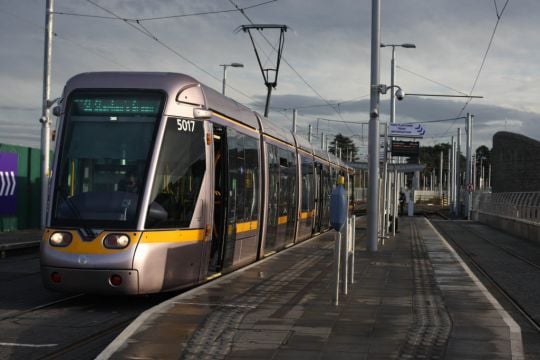The High Court has struck down permission for 227 apartments in Goatstown, south Dublin, as there was a failure to demonstrate that the site is well served by high-capacity public transport.
Mr Justice David Holland was not convinced that An Bord Pleanála planners are entitled to take a “build and public transport will come” view when assessing a proposed project that does not meet local development plan criteria.
He said planning authorities are obliged to apply relevant “specific planning policy requirements” (SPPRs) when approving a project that materially contravenes a local plan.
Here, the proposed four blocks of up to eight storeys exceed the local development plan’s height requirements, so the board had to ensure the site at Knockrabo, Mount Anville Road, “is well served by public transport with high capacity, frequent service and good links to other modes of public transport”, the judge said.
An Bord Pleanála’s planning inspector had concluded it was so served, with buses nearby and a Luas stop about 1.7km (16-22 minute walk) away, the judge noted.
The board told the High Court its inspector had also cited planning policies, including the Draft Greater Dublin Area Transport Strategy 2016-2035 which proposes upgrading passenger capacity on the existing Luas Green Line “as required to meet demand”.
The judge said the strategy notes the Luas provides a “high frequency, high capacity service [...] with trams operating at a frequency of up to every three minutes at peak hours”.
However, it also says the existing line is “operating close to its maximum theoretical capacity” at peak times. The strategy envisages that introducing longer and higher capacity trams could deliver a “limited increase” in capacity, but “significant investment” is needed to meet future needs, the judge said.
Mr Justice Holland said the inadequacy, anticipated in 2016, of the Luas “at least implies questions as to the real capacity of trams arriving at peak hour”. Perhaps these questions can be “readily and reassuringly” answered, but the board’s decision did not consider them, he said.
Developer Knockrabo Investments DAC failed to demonstrate the site is well served by public transport as required, while the board failed to consider and conclude per law the issue of current capacity.
On a single ground, he quashed the board’s permission, of March 2022, which was challenged via judicial review by Ciaran Mulloy, of Woodlands Park, Blackrock, Co Dublin, represented by FP Logue solicitor Eoin Brady.
The judge dismissed all other grounds of challenge.
The plan for 76 one-bed units, 145 two-beds and six three beds, was to replace earlier permission for 93 homes on the site. A wider Knockrabo development site includes 125 homes built in a first phase, with 81 units and the 227-unit portion to come in phase two.
Giving judgment on Tuesday, Mr Justice Holland said he was not convinced that national policy is “build and public transport will come”.
Lawyers for An Bord Pleanála submitted to him that: “transport policy does not support the notion that trains and buses run at half or three-quarters capacity to have empty space available. Demand comes first”. The judge rejected their argument that he should dismiss the capacity ground because legal authorities have not before required an “empty seats” analysis of transport capacity.
The judge said it “makes perfect sense” to build high-density apartments where public transport is already available and has spare capacity. However, requiring this existing capacity was not an inevitable policy choice or one that cannot be changed by Government if considered unrealistic, he added.
The board’s March 2022 approval came despite a strong recommendation from Dún Laoghaire-Rathdown County Council that permission should be refused. The council had been bypassed as first-instance decision maker as the developer elected to seek direct approval from An Bord Pleanála under the now-expired “strategic housing development” regime.
There was also local opposition, including from Sinn Féin TD Chris Andrews, who observed excessive density and negative visual impact of the proposal.







